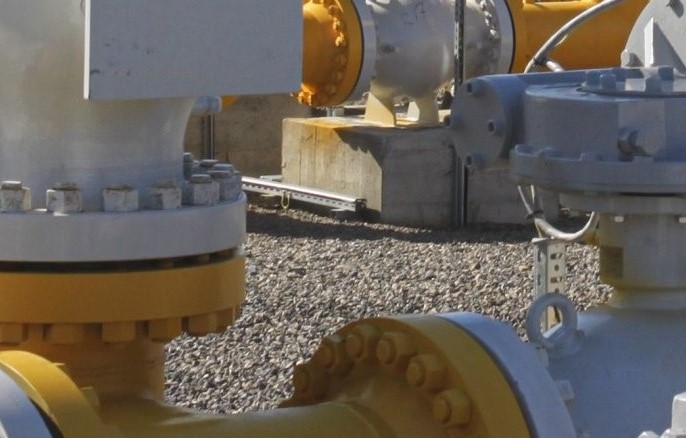The surge in U.S. natural gas production has led to a noticeable easing of gas prices, a trend that many consumers might see as a welcome relief at the pump.
However, the sharp decline in prices is more than just a case of good news for American drivers. It’s indicative of broader energy market dynamics and potential economic implications that could affect everything from consumer spending to the state of the overall economy.
The Record Output That’s Reshaping the Market
In March 2025, the U.S. reached a milestone in natural gas production, with average output hitting a staggering 105.9 billion cubic feet per day.
This represents one of the highest levels ever recorded, signaling a booming energy sector. This surge in production, combined with pipeline expansions and increasing takeaway capacity, is shifting the balance of supply and demand.
Completed natural gas pipeline projects have expanded U.S. capacity by an impressive 17.8 billion cubic feet per day in 2024.
These new infrastructure investments enable the swift and efficient transport of natural gas across regions, ensuring that supply can meet growing demand without pushing prices up.
Consequently, the result has been a steady drop in gas prices in recent weeks, with futures hitting a two-week low as of mid-March.
The Ripple Effect on Gas Prices and Consumers
For consumers, the most immediate effect of this record output is lower gas prices. Gasoline prices at the pump have already started to ease, with many states seeing prices fall below $3 per gallon.
At first glance, this seems like a boon for consumers, offering savings at a time when the cost of living remains high.
However, experts warn that this price drop might signal something more complex than just a temporary win for household budgets.
Lower gas prices are often linked with decreased demand—especially during off-peak seasons or periods of economic slowdown. If demand continues to fall, it could be a signal that consumer confidence is slipping or that the broader economic recovery is stalling.
The Impact on Energy Producers and The Broader Economy
While consumers may benefit from reduced fuel costs, lower gas prices could put significant pressure on energy producers. Record output doesn’t necessarily guarantee higher profits for companies in the energy sector.
If prices continue to decline, it may force operators to scale back production or delay new projects, slowing down the industry’s growth.
From a macroeconomic perspective, these fluctuations could have profound impacts on inflation and consumer spending.
Gas prices are often one of the most visible indicators of inflation, and a sharp drop in fuel prices can influence how consumers allocate their budgets.
However, sustained low prices could also undermine the recovery of industries that rely on higher energy prices to incentivize investment, innovation, and expansion.
What’s Behind the Decline in Prices?
Several factors have contributed to the easing of gas prices. One major factor is the rise of renewable energy sources and more energy-efficient technologies, which have reduced the demand for fossil fuels in some sectors.
Additionally, changes in geopolitical dynamics, such as U.S. energy independence and global shifts in oil and gas markets, have made the energy sector more stable in terms of domestic production.
Another key driver of this price reduction is the ongoing increase in natural gas storage capacity, which helps buffer against short-term demand spikes.
The U.S. has made significant investments in infrastructure that allow gas to be stored and distributed more effectively, ensuring that market prices stay relatively stable even when weather or market fluctuations cause short-term disruptions.
What’s Next for Gas Prices?
As the U.S. energy sector continues to hit production records, it’s likely that gas prices will remain lower in the short term.
However, experts caution that this should not be seen as a permanent trend. If demand picks up in the summer months or geopolitical tensions disrupt supply chains, prices could rebound sharply.
Moreover, energy companies might adjust their strategies in response to lower prices, potentially scaling back investments in drilling or infrastructure development, which could affect supply and eventually cause prices to rise again.
The Bigger Picture
While lower gas prices can provide some relief for consumers, they also come with mixed signals for the economy. On one hand, reduced fuel costs can help curb inflation and leave more money in consumers’ pockets.
On the other, they may reflect broader economic trends that could lead to slower growth.
As the U.S. continues to expand its natural gas production capabilities, the key to understanding the full impact on consumers and the economy will lie in balancing this abundance with long-term sustainability.
More investments in alternative energy sources, coupled with smart regulation of the fossil fuel industry, could be crucial in ensuring that lower gas prices do not come at the expense of the environment or long-term economic stability.
In conclusion, while Americans may be enjoying a temporary dip in fuel prices, the complex interplay of supply, demand, and energy market dynamics indicates that this drop is part of a broader economic puzzle.
Only time will tell whether this price shift is a harbinger of a lasting trend or just another chapter in the volatile world of energy pricing.
Also Read

